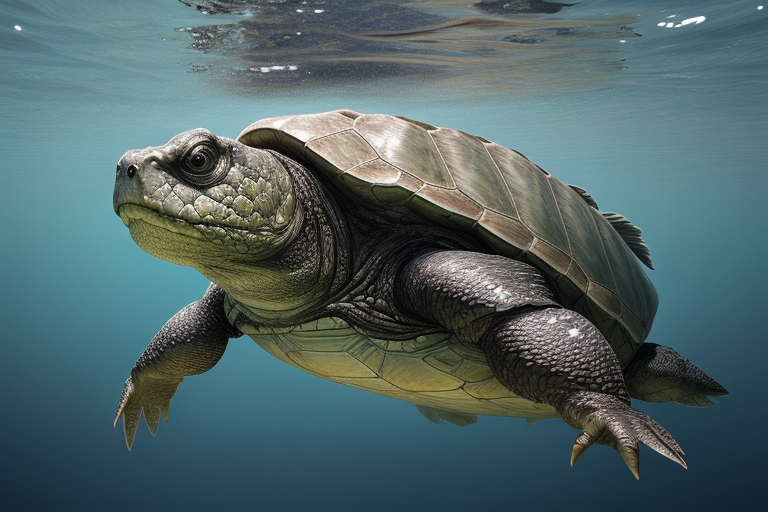Introduction
The alligator snapping turtle (Macrochelys temminckii) is a remarkable and ancient creature known for its massive size, intimidating appearance, and unique dietary preferences. In this article, we will delve into the intricate world of alligator snapping turtle diet and feeding. We’ll explore what these fascinating reptiles eat, how they catch their prey, and the best practices for maintaining their health in captivity.
The Alligator Snapping Turtle: A Brief Overview
Before we dive into the specifics of their diet, let’s take a moment to understand the alligator snapping turtle itself. This remarkable species is primarily found in the southeastern United States, with its habitat spanning rivers, lakes, and bayous. Known for their impressive size, these turtles can reach up to 220 pounds and have a lifespan of several decades.
Natural Diet of the Alligator Snapping Turtle
Alligator snapping turtles are carnivorous reptiles, and their diet primarily consists of the following:
- Fish:
- Fish are the primary food source for alligator snapping turtles. They are skilled hunters, lying in wait to ambush passing fish. They employ a unique hunting technique by using a specialized lure on their tongue to attract prey.
- Amphibians:
- These turtles occasionally feed on amphibians like frogs, toads, and salamanders. Amphibians are typically available in their aquatic environments.
- Invertebrates:
- Alligator snapping turtles may also consume various invertebrates, such as crayfish, snails, and aquatic insects. These creatures make for a suitable supplementary diet.
- Carrion:
- Opportunistic scavengers, these turtles are not averse to feeding on carrion or dead animals when the opportunity arises.
- Small Mammals and Birds (infrequent):
- While less common, alligator snapping turtles have been known to eat small mammals and birds that venture close to the water.
Captive Diet and Feeding Practices

If you are considering keeping an alligator snapping turtle in captivity, it is crucial to replicate its natural diet as closely as possible. Here are some expert guidelines for their captive diet and feeding:
Variety is Key
Feeding Schedule: Alligator snapping turtles should be fed regularly, with young turtles requiring daily meals, and adults every 2-3 days. Monitoring their body condition will help you adjust their feeding schedule accordingly.
Fish Selection: Offer a diverse range of fish species, including minnows, goldfish, and feeder fish, to ensure a balanced diet. Remove uneaten food promptly to maintain water quality.
Supplementary Foods: In addition to fish, offer occasional treats like crayfish, earthworms, and live or frozen feeder rodents. These supplements provide variety and essential nutrients.
Feeding Techniques
Live Prey: Whenever possible, provide live prey. This promotes natural hunting behaviors and mental stimulation for captive turtles.
Cautious Handling: Be mindful of your safety and the turtle’s when hand-feeding. Alligator snapping turtles have powerful jaws and a quick strike. Use long tongs or feeding sticks to minimize the risk of accidental bites.
Environmental Considerations
Aquarium Size: Ensure your turtle’s enclosure is appropriately sized to accommodate its growth. A larger tank or pond is necessary as they mature, along with strong filtration to maintain water quality.
Basking Spots: Alligator snapping turtles require basking spots to regulate their body temperature. UVB lighting is essential to support their health and calcium metabolism.
Health Monitoring
Regular Check-ups: Periodic check-ups by a reptile veterinarian are essential to ensure your turtle’s well-being. They can provide valuable advice on dietary adjustments and health issues.
Conclusion
Alligator snapping turtles are remarkable creatures with unique dietary requirements. Whether in the wild or in captivity, their diet and feeding practices play a crucial role in their overall health and well-being. By following the expert advice outlined in this article, you can provide these fascinating reptiles with a diet that mimics their natural feeding habits and ensure their long-term vitality and happiness. Remember that proper care and attention to detail are paramount when it comes to the diet and feeding of alligator snapping turtles.



